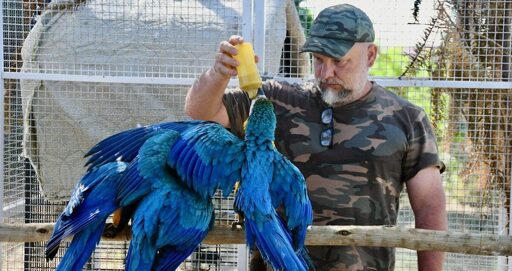Six blue-and-yellow macaws are gracing the skies of São Simão, in Brazil’s southeastern São Paulo state, after more than five decades of local extinction, Mongabay contributor Suzana Camargo reported. Conservationists used a new technique to train captive-born macaw chicks (Ara ararauna), encouraging them to fly in the wild as early as 3 months of age. The method, called free flight, is commonly used to train pet birds, but had never been used for conservation before. More than two years later, all six birds are still alive and well-adapted to the wild, even surviving adverse events such as a 2024 wildfire that swept through the region. Conservationists reported a 100% success rate in the scientific journal Birds. “In most cases, when you open the cage, the release is final,” Donald Brightsmith, one of the world’s leading experts on parrots, told Camargo. “Often they fly for miles and end up getting lost, there are problems with predators or a whole host of other issues with traditional methods.” The macaws, two males and four females, were bought as chicks from licensed breeders. They began flight training with a mobile cage when they were around 90 days old, roughly the time when macaw chicks normally start exploring beyond the nest in their natural habitat. “As soon as the chicks have the slightest ability to fly, we encourage them to jump between two points to be fed,” Chris Biro told Camargo. Biro is a leading expert in free-flight training for pet birds and helped lead…This article was originally published on Mongabay
From Conservation news via this RSS feed


